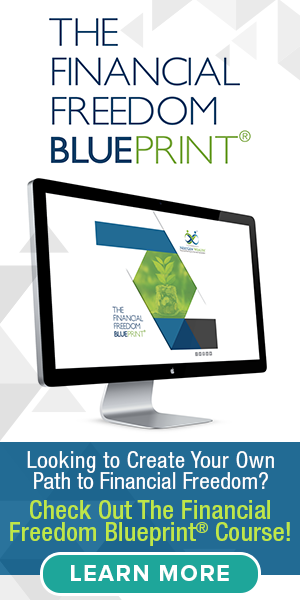Our Review of Mint vs. Personal Capital
There was a time when monitoring your financial situation was relatively complicated. Whether it was balancing a checkbook or writing expenses in a ledger, you had to input everything by hand and do a lot of math to get accurate results. 
Thankfully, we’re living in the golden age of technology. Instead of using old-fashioned financial tracking methods, all you need to do is download an app, and you’re ready to go. However, with so many options available, it can be a bit overwhelming to determine which one is best for your needs. Fortunately, we’re here to help with our review of Mint vs. Personal Capital.
Both of these apps are highly rated and have similar mechanics. As you’ll see, though, one is designed for budgeting while the other is skewed toward investments. Our detailed breakdown will help you compare the benefits and disadvantages so that you can put your financial future in good hands.
The Lowdown: A Brief Overview of Personal Capital and Mint
Before we can dive into a detailed comparison, we have to know what each app is all about. Here is a breakdown of what you can expect when you download and install these programs.
Mint
Although Mint has been around since 2006, it was acquired by Intuit in ‘09. If you’re not familiar with Intuit, the company has several financial programs and apps, including QuickBooks and TurboTax. Intuit used to own Quicken, but they sold it in 2016.
With that kind of resume, you can feel confident in tracking and monitoring your finances with Mint. The way it works is that you connect the app to all of your accounts (i.e., banks, loans, and other financial institutions). From there, Mint updates you regularly to see how well your cash flow is going (money in and money out).
We’ll go into further detail about the core elements of Mint, but it specializes in giving you access to your credit score, as well as notifying you when payments are due and when a balance is reaching its limit (i.e., on a credit card).
Best of all, Mint is free to download and use, although some services require payment.
Personal Capital
On the surface, this software hits a lot of the same notes as Mint. It’s free to use, you connect a variety of accounts to it, and it will notify you based on different triggers (i.e., high balances). The company started in 2009 and has since grown into a multi-billion dollar brand.
Where Personal Capital differs, however, is that it offers paid financial consulting along with free personal finance monitoring. However, because Mint doesn’t have that feature, we won’t focus on it too much. However, it’s worth noting if you want to have an app that helps you invest your money more wisely.
Unique Features of Mint
So far, in this review of Mint and Personal Capital, we’ve outlined how the two programs are similar or identical. Now let’s take a look at how they differ by focusing on the unique features that they offer.
Personal Budgeting
If you want to keep track of your cash flow, this app is excellent at helping you understand where your money is going. Not only that, but it takes things a step further by giving you detailed budgeting. You can determine how much you want to spend each month, and Mint will provide you with updates regularly.
Credit Monitoring
One of the most crucial elements of a financial plan is your credit score. Mint has both a free and paid reporting service to break down your score and what affects it. The paid report is $16.99, and it gives you a detailed analysis of the three main credit agencies (Experian, TransUnion, and Equifax).
Saving Recommendations
If you want to change from a spender to a saver, Mint can give you personalized suggestions based on your spending habits. These recommendations are also how Mint makes money, as it directs you to paid services or affiliate brands.
Extra Security
Because Mint connects to your bank accounts and financial information, you want to make sure that it’s well-protected. As a means of offering better security, Mint.com comes with two-factor authentication.
Unique Features of Personal Capital
Retirement Planner
While investing can be about more than just growing a nest egg, Personal Capital helps you make sure that you’re on track to have enough money in retirement. One extra benefit is the “what if” feature that helps you understand the impact of various scenarios (both good and bad).
Asset Allocation Target
Typically speaking, you want to diversify your investments as much as possible so that you’re not over or underweight in a specific asset or equity class. Personal Capital will analyze your accounts for you to see how well you’re doing, and what you may need to change to get on track to hit your goals.
401k Fee Analyzer
You might be paying more in retirement account fees than you realize. This app can keep track of the fees you’re currently paying so that you can adjust accordingly. Depending on how much you are paying in fees, Personal Capital could pay for itself with this feature.
Paid Financial Management
Although we won’t dive into this feature, you can get professional investment advice from the app. This service is helpful if you want to automate your investment strategy or if you’re brand-new to the world of investing.
Ad-Free App
Don’t worry about accidentally clicking on a banner ad when trying to see your account. Personal Capital doesn’t make money with advertisements, as Mint does.
Our Review of Mint vs. Personal Capital - By the Numbers
Now that we have a better understanding of what sets these programs apart, let’s start diving into how well they compare. The categories we’ll be looking into include:
- Account Syncing
- Budgeting
- Investment Analysis
- Alerts and Notifications
- Customer Service
- Mobile Access
- Account Security
- Retirement Planning
Account Syncing
Because Intuit owns Mint, the app uses the company’s internal syncing services. Comparatively, Personal Capital uses a third party, Yodlee, to manage syncing with your various bank and financial accounts.
Unfortunately, Intuit doesn’t seem to have mastered the art of reliable syncing, as Mint can generally have problems. At times, you may have to re-enter your account details to get it back on track. Also, some institutions have more stringent security than others, which can bounce you out more regularly.
With Personal Capital, however, Yodlee seems to be a better service. For the most part, your accounts will stay synced. If and when you do experience a connection issue, Personal Capital is much more responsive than Mint.
That being said, both apps can connect to almost all major financial institutions, including banks, credit unions, and credit cards.
Winner: Personal Capital
Budgeting
As we mentioned, budgeting is Mint’s bread and butter. Since the app was built as a personal finance tool, it offers a wide selection of features that can help you stay on top of your spending habits and change them incrementally over time.
The way Mint works is that it breaks down each purchase into categories. If it’s not sure of the group (or it guessed wrong), you can correct it manually. You can also set limits on each section to help you ensure that you don’t overspend in a given month. Typical categories are things like food, entertainment, finances (i.e., service charges), gas, and utilities. Also, Mint will notify you when you are close to a budgetary limit.
On the other hand, Personal Capital looks at your cash flow in much more general terms. You can get totals of money coming in and going out, but the app won’t break everything down into different categories. You would have to do that yourself.
Winner: Mint
Investment Analysis
Just as Mint is designed to help you budget, Personal Capital is made to assist with investing. Overall, Mint doesn’t have any specific tools to aid with growing your money over time. The closest thing it has is being able to see how well your investment or retirement accounts are growing.
Personal Capital is much better at offering insight and suggestions into how you can make smarter long-term investments with your money. Not only can it provide projections based on current input and performance, but it can show you different variables that can affect an investment’s growth potential.
Another benefit of Personal Capital is that it gives you a free evaluation of your investment strategy to see if you’re going to reach your goals or not. If not, it will help steer you toward better financial success.
Winner: Personal Capital
Alerts and Notifications
Because Mint is designed to help you keep track of your spending habits, it offers frequent (and accurate) bill alerts. These notifications occur when any bill is due, including credit card payments, auto payments, utility bills, and others. Best of all, it will alert you days before the due date so that you have time to move money around if necessary.
Mint will also notify you when you reach or exceed a budgeting limit. While it can seem a little overwhelming at times to keep getting these alerts, the app does seem to recognize when you make payments. So, if you’re always paying bills early, you probably won’t get a full inbox. 
Personal Capital, on the other hand, doesn’t really notify you about pending or upcoming bills. It’s so infrequent that it’s almost not worth mentioning.
Winner: Mint
Customer Service
You would think that a massive company like Intuit could afford to hire a few tech support people to assist customers when Mint has issues. However, there doesn’t seem to be any customer service available for either the app or the website. As we mentioned, syncing can be a pain sometimes, so be prepared to enter your financial information multiple times.
Thankfully, Personal Capital has attentive customer support options. Whether you have an issue with the app or you want to talk to a financial advisor, you can do so with a click of a button. Typically, you can get a response within 24 hours from Personal Capital.
Winner: Personal Capital
Account Security
As we discussed earlier, making sure that your financial information is secure should always be a priority. Both apps have a few built-in features that keep your accounts safe, such as:
- Read-Only Software - you can’t make transactions with your accounts (i.e., withdraw money). You can only see your transaction history.
- No Account Numbers - rather than storing account details within the app, each program simply uses them to log in with your financial institutions.
- Fingerprint Access - if your phone comes with a biometric scanner, you can connect it to both Mint and Personal Capital.
The area where these apps differ is that Mint requires two-step authentication, while Personal Capital doesn’t. Both apps have registering software that detects if you use the system from a new device, prompting authentication.
Winner: Mint, by a slim margin
Retirement Planning
As with investment analysis, Mint doesn’t have any features or services to help you plan for retirement. Personal Capital, however, has free tools that can give you insight into how well you’re doing and what you could be doing better. Also, Personal Capital will show you how much you need to save for retirement based on your lifestyle and a few other factors.
Winner: Personal Capital
Bottom Line: Mint is For Budgeters, Personal Capital is For Investors
While both of these apps are excellent at monitoring your financial health, they are built for two different types of people. If you’re not concerned with wealth management or investment growth at the moment, Mint may be a better choice. It can help you figure out where your money is going and how you can curb your spending.
Conversely, Personal Capital is designed for investors, both new and experienced. While you can’t make investments through the app (a la Robinhood), it does offer detailed insights into how well your money moves are performing. Also, with the paid consultation service, you can take investing to the next level.



